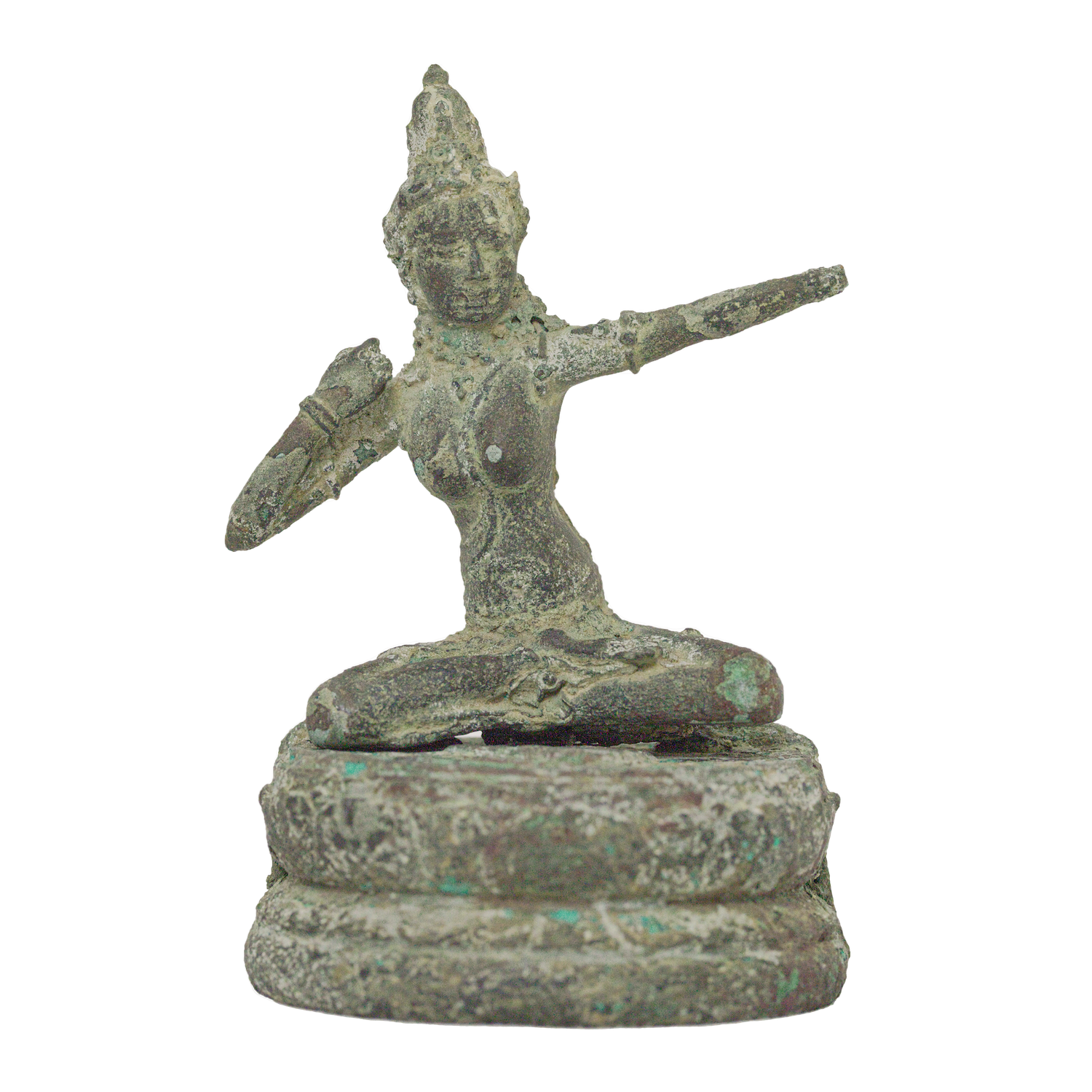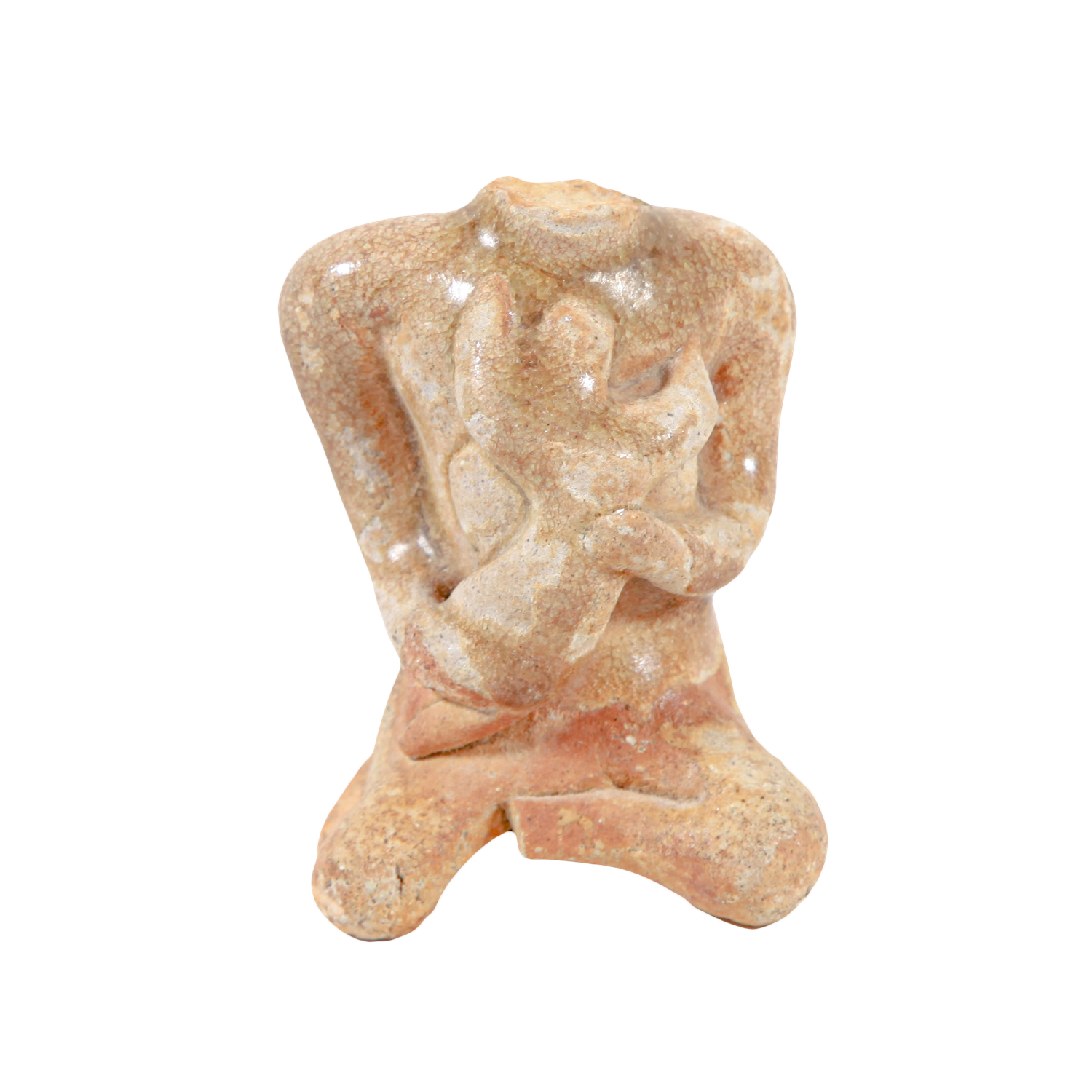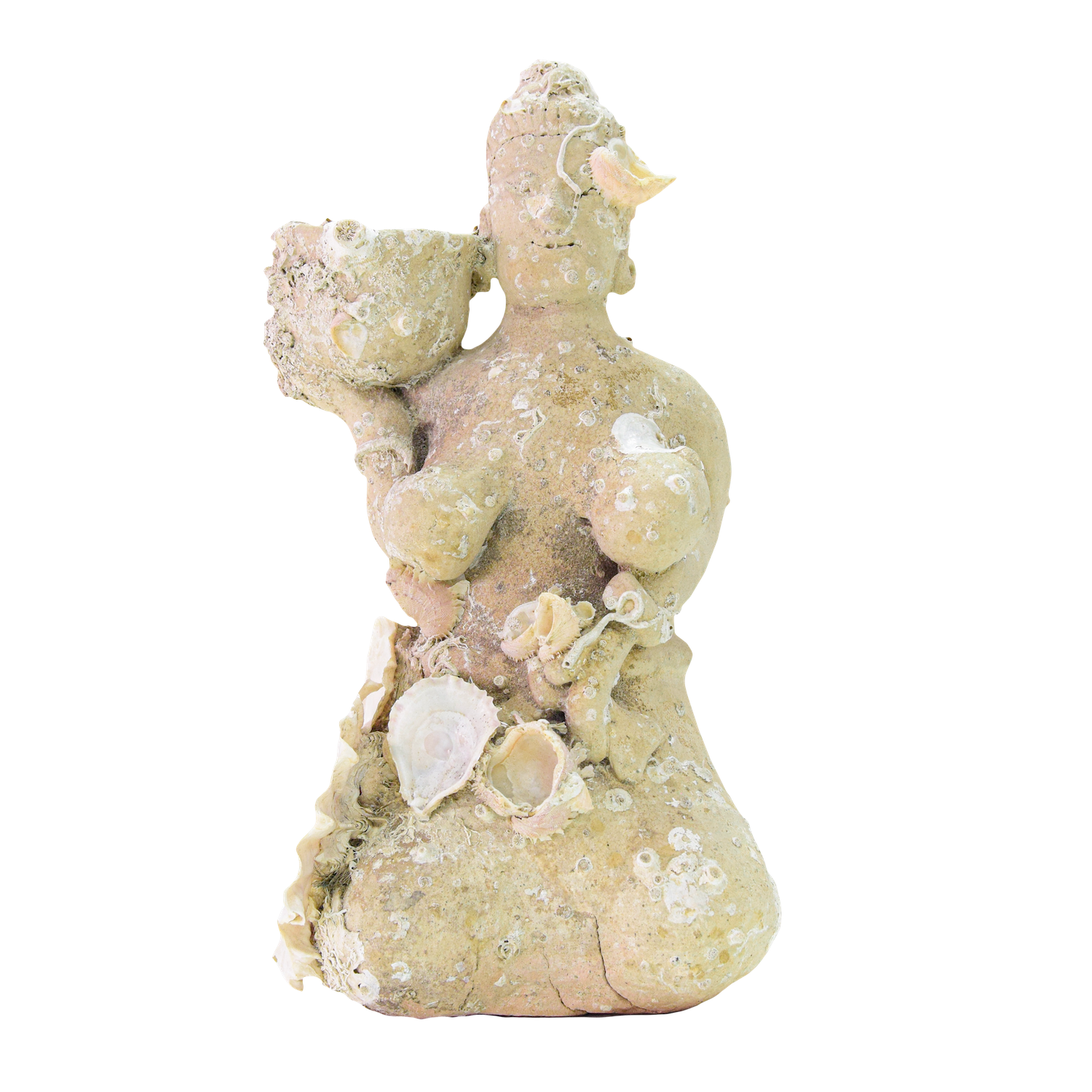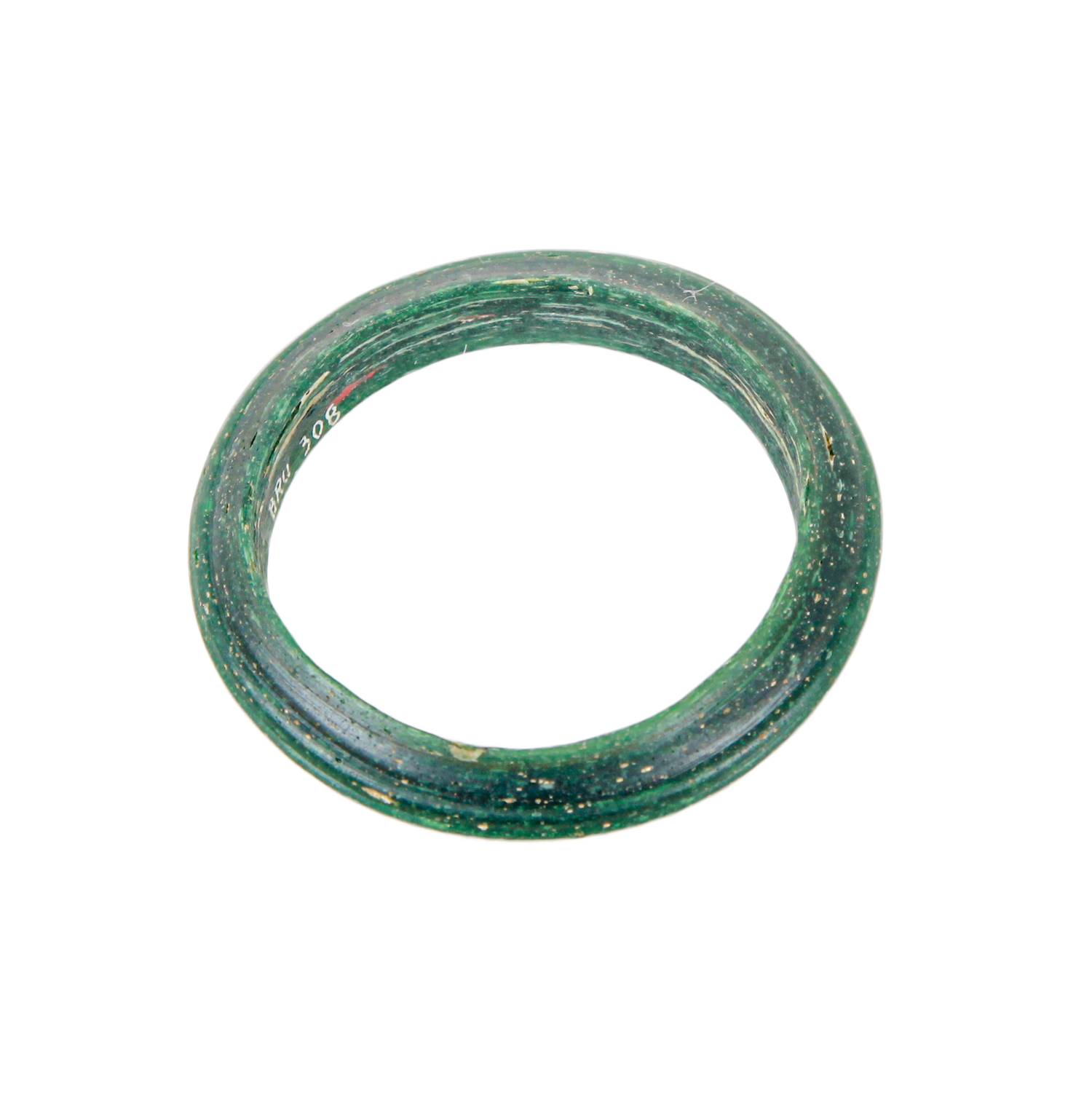
Women at Sea
Women played a crucial role in enabling long-distance journeys and maintaining the social and economic fabric of communities connected to and by the sea. From providing essential support onshore to participating directly in voyages as passengers and crew, women have contributed in various capacities to the shaping of maritime histories in and beyond Southeast Asia.
Despite this, they have historically been excluded from narratives of seafaring and exploration, which are often portrayed as male domains. This gendered perspective overlooks the significant roles women have played in maritime contexts, limiting our understanding of the past and underscoring the need for more inclusive and reflexive interpretations.
From the conventional to the esoteric, women are represented in different ways in this exhibition. The figurine of maternity from Brunei, dating from the 14th–17th centuries and originating from Thailand, suggests the nurturing and protective roles women played. The Dewi Tara sculpture from Indonesia, recovered from the 10th century Cirebon shipwreck, exemplifies the high social status and spiritual significance of women in maritime contexts. Made of bronze, this statue was likely owned by someone of high rank, reflecting the importance of women in both religious and social spheres. Meanwhile, the ceramic figurine of a woman from the Klang Aow shipwreck illustrates the cultural and artistic representations of women in Southeast Asia’s maritime history. The green glass bracelet found in the Brunei shipwreck gives insights into jewellery worn by women in Southeast Asia during the 15th–early 16th centuries.
While these objects are more overtly related to women at sea, we can also think about the silence of the other objects in this exhibition, whose connection to women might be less clear. What roles might women have played in their production, transportation and preservation? By contemplating these possibilities, we can revisit accepted narratives and create space for conversations about the diverse and important roles women have played in maritime contexts. Through these objects, we take tentative steps towards a more balanced and comprehensive understanding of maritime history – one that emphasises the indispensable contributions of women.
Theme image: Details on the Caraoca Boat Model, ©Ayala Museum Philippines.




